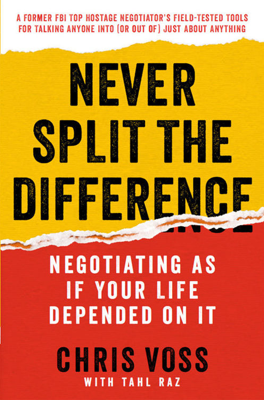Create the Illusion of Control
The Illusion of Control in Negotiations
Subjugating Strong Tactics for Cooperation: Chris Voss identifies negotiation not as overpowering but as a process of co-opting, transforming it from a contest of wills into a shared journey towards a solution. Through his experience, he underscores that the essence of proficient negotiation is coaxing rather than overcoming. Creating the illusion of control is paramount, allowing counterparts to feel at the helm while subtly guiding the discourse to more fruitful resolutions.
Calibrated Questions: These open-ended inquiries are pivotal in diminishing aggression within conversations. Unlike direct assertions that may prompt opposition, calibrated questions foster a collaborative dialogue, encouraging the counterpart to conceive solutions conducive to the negotiator's aims. Such questions are framed to elicit expansive answers, subtly directing the conversation towards resolving challenges beneficially. Key examples include: - "What do you hope to achieve by going?" - "What is the biggest challenge you face?" - "How can we solve this problem?"
Contextual Failures and Learnings: The disastrous resolution of the Dos Palmas kidnapping underscores the flaws in a confrontational negotiation approach. Voss recounts this failure to critique traditional aggressive tactics, emphasizing the shift towards understanding negotiation as a subtler, more cooperative endeavor.
Leveraging Team Dynamics: Negotiation is seldom a dyadic interaction between two individuals; often, there is a team or an organization backing each participant. Recognizing and strategizing to influence not just the direct counterpart but also the supporting team is crucial for sustainable negotiation outcomes.
Emphasizing Emotional Regulation and Control: An essential component of successful negotiation is self-control. Emotional mastery not only prevents potential escalations but also facilitates a more measured and thoughtful communication strategy. This includes using pauses effectively to collect one's thoughts and adopting a non-confrontational stance even when provoked.
Turning Attacks into Opportunities: When faced with verbal attacks or aggressive posturing by counterparts, the strategic response involves sidestepping direct confrontation through calibrated questioning, which can transform contentious exchanges into problem-solving discussions.
Effective Communication Beyond Words: It's not merely the content but the framing of inquiries and statements that dictates the flow of negotiation. Calibrated questions are designed to harness the conversation's direction effectively and discreetly, empowering the negotiator to steer outcomes subtly yet significantly.
Practical Integration of Key Techniques
Calibrated questioning not only aids in easing tensions but also anchors the negotiation process in cooperative problem resolution. This approach not only aligns the goals of the negotiators with those of their counterparts but also mitigates the adversarial nature of the negotiation, leading to more productive and amicable outcomes.
